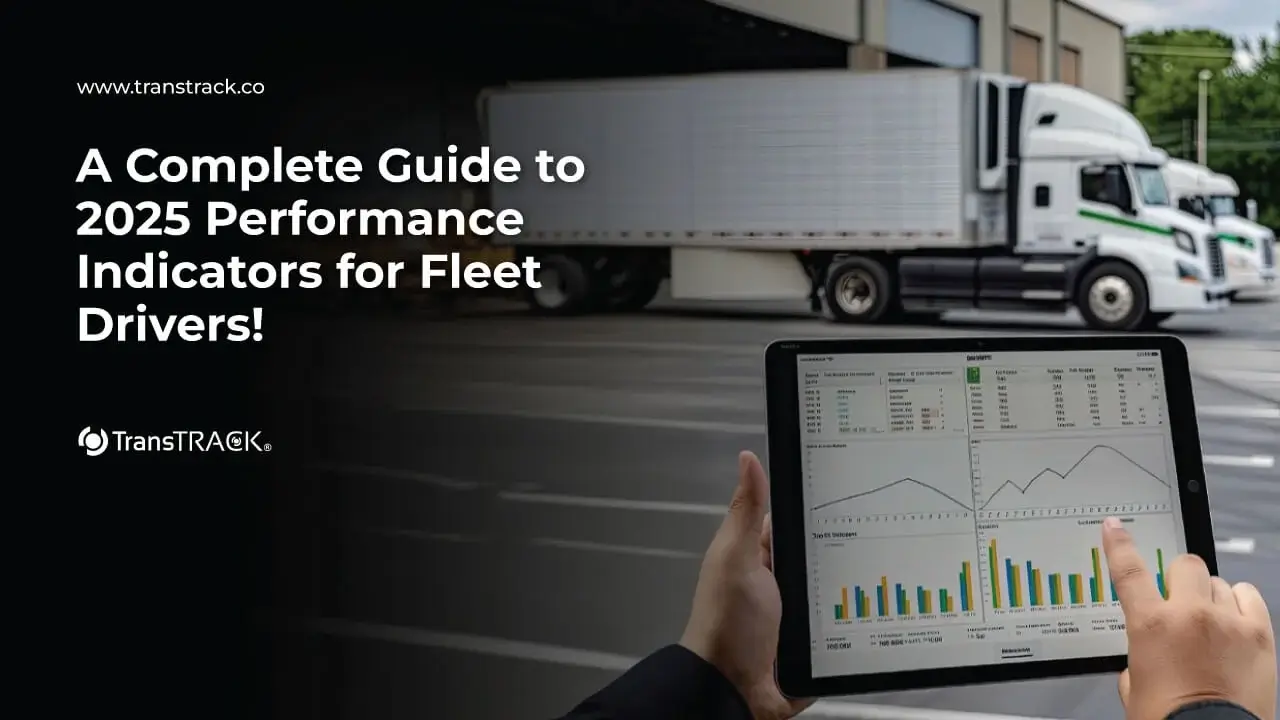A Complete Guide to 2025 Performance Indicators for Fleet Drivers!
Posted on January 23, 2025 by Nur Wachda Mihmidati

In the transportation and logistics industry, fleet drivers are a key element that determines operational success. Not only are they responsible for ensuring goods arrive on time, but they also influence cost efficiency, road safety and customer satisfaction. But how can companies ensure that their drivers are performing optimally? For this reason, there are key performance indicators that are used as a benchmark.
This is where Key Performance Indicators (KPIs) play an important role. By using the right KPIs, fleet managers can measurably monitor, evaluate, and improve driver performance. This article TransTRACK will discuss the key factors in determining fleet driver KPIs, relevant key performance indicators, and strategies to improve efficiency and productivity using these KPIs.
Let’s begin to understand how KPIs can be a strategic tool in creating a safer, more efficient, and productive fleet.
Key Factors in Determining Fleet Driver KPIs
In determining key performance indicators (KPIs) for fleet drivers, it is important to consider factors that not only reflect operational efficiency but also support driver safety, compliance, and well-being. Here are some of the key factors:
1. Safety
Safety is a top priority in fleet operations. Safety-related KPIs include:
- Number of accidents: Measures the frequency of accidents involving the fleet.
- Risky driving behavior: Detects behaviors such as sudden braking, extreme acceleration, or cell phone use while driving.
2. Fuel Efficiency
Efficient use of fuel not only reduces operational costs but also supports environmental sustainability. Relevant KPIs include:
- Fuel consumption per kilometer: Measures fuel efficiency per trip.
- Engine idle time: Monitors the time the vehicle stops without turning off the engine.
3. Driver Productivity
Driver productivity reflects the fleet’s ability to effectively meet operational demands. KPIs to consider:
- Number of deliveries completed: Measures the volume of work per driver in a given period.
- Schedule adherence: Measures the level of punctuality of drivers in completing tasks.
4. Compliance
Ensuring drivers comply with applicable regulations is crucial to avoiding fines and maintaining the company’s reputation. KPIs include:
- Working time compliance: Ensuring drivers adhere to the rules of working hours and breaks.
- Implementation of designated routes: Avoid violating company policies regarding route usage.
5. Driver Well-Being
Drivers who feel valued and supported tend to perform better. KPIs for well-being include:
- Job satisfaction rate: Based on driver surveys regarding work environment, salary, and management.
- Turnover rate: Measures the number of drivers who leave the company in a given period.
Strategies to Use KPIs for Fleet Driver Performance Improvement
Key Performance Indicators (KPIs) will only be effective if they are supported by a clear strategy for monitoring, analyzing, and improving. By implementing a systematic approach, companies can improve driver productivity, efficiency, and safety. Here are the key strategies for using KPIs to improve the performance of your fleet drivers:
1. Utilization of Technology for Data Collection and Analysis
Technology plays an important role in collecting and analyzing KPI data in real-time.
- Telematics Implementation: Use telematics devices to monitor driver behavior, fuel consumption, idle time, and route adherence.
- Integration with Fleet Management Systems: Connecting telematics data with fleet management software enables automated analysis to identify areas of improvement.
2. Provide Regular and Transparent Feedback
Drivers need information about their performance to understand areas for improvement.
- Personal Performance Report: Provide drivers with regular reports on their achievements based on relevant KPIs.
- Visual Dashboard Usage: Display KPI data visually to help drivers understand their performance easily.
- Regular Discussion Sessions: Hold meetings to discuss performance results and provide constructive feedback.
3. Provide Data-Driven Training and Development
Training is a strategic step to improve driver skills according to the KPI analysis results.
- Safe Driving Training: Focus on reducing risky behaviors such as sudden braking and high speed.
- Fuel Efficiency: Teach fuel-saving practices, such as avoiding excessive idle time.
- Use of Technology: Provide training on the use of devices such as GPS or ELD (Electronic Logging Device) systems.
4. Implement a Performance-Based Reward System
Rewarding drivers who perform well can motivate them to keep improving their work.
- Financial Incentives: Give bonuses to drivers who achieve or exceed KPI targets.
- Non-Material Recognition: Use awards such as certificates or recognition in team meetings to honor good performance.
- Performance Competition: Organize healthy competitions between drivers based on certain KPIs, such as fuel efficiency or on-time delivery.
5. Proactively Schedule Fleet Maintenance
Driver performance is inseparable from the condition of the vehicles they use.
- Maintenance Schedule Monitoring: Ensure vehicles are in optimal condition through regular maintenance based on telematics data.
- Quick Fix: Address vehicle issues as soon as they are detected to avoid productivity-disrupting downtime.
6. Improving Driver Welfare
Drivers who feel valued tend to be more motivated to achieve KPI targets.
- Support Facilities: Provide access to convenient rest facilities and flexibility in work schedules.
- Wellbeing Survey: Periodically ask drivers for feedback to identify their needs.
- Work-Life Balance Program: Create policies that allow drivers to have time for family or personal activities.
Effectively managing fleet driver performance requires a combination of strategies that include the use of relevant KPIs, telematics technology, ongoing training and performance-based rewards. With this approach, companies can improve driver safety, productivity, efficiency and well-being while reducing operating costs.

To help you implement a comprehensive fleet management system, TransTRACK offers a Fleet Management System solution designed to monitor, analyze, and optimize driver performance in real-time. With superior features such as GPS tracking, integrated KPI reports, and vehicle maintenance management, TransTRACK enables you to achieve maximum operational efficiency.
Start the journey to smarter fleet management with TransTRACK today! Contact us today for more information and a free demo.
Recent Post
Topic :
fleet managementsafety managementvehicle safety
Recommended Articles

 Bahasa Indonesia
Bahasa Indonesia








